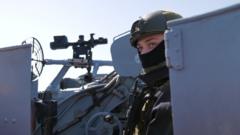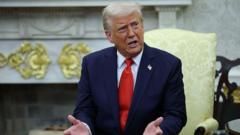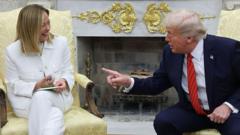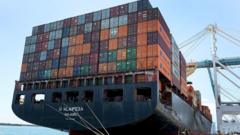A recent report from the BBC indicates that an estimated half a million weapons obtained by the Taliban in Afghanistan are now either lost or have been sold on the black market, raising fears that some of this weaponry has made its way to militant organizations such as al-Qaeda. After regaining control over Afghanistan in 2021, the Taliban inherited a stockpile of roughly one million military items, largely funded by US support. Numerous Afghan soldiers surrendered or fled, leaving behind military gear, while US forces left many items unaccounted for as they depersonalized their engagement in the region.
US Weapons in Afghanistan: Alarming Reports of Sale to Militants
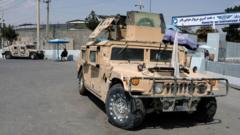
US Weapons in Afghanistan: Alarming Reports of Sale to Militants
Concerns mount as abandoned US military equipment reportedly sold to extremist groups in Afghanistan, following Taliban's return to power.
During discussions in a closed-door UN Security Council session, it was disclosed that the Taliban admitted to losing track of at least half of this military equipment. UN reports further revealed that affiliates of al-Qaeda, including several militant groups like Tehreek-e-Taliban Pakistan, are accessing these weapons or procuring them through the black market. Though the Taliban's deputy spokesperson claimed they are actively securing these weapons, evidence suggests otherwise. The UN noted that a portion of the captured US weapons is allowed to remain with local Taliban commanders.
Widespread black market exchanges have been reported, particularly in places like Kandahar, with rumors of weapons trade continuing through private messaging channels. Despite official statements denying any loss or smuggling of weapons, independent reports reveal a flourishing trade in military equipment, with the Taliban utilizing this weaponry to consolidate power against rival factions.
The Pentagon had previously asserted that the equipment left in Afghanistan was non-operational, but the Taliban has since showcased various arms in propaganda, although many advanced items remain unserviceable due to a lack of technical knowledge. Amidst ongoing security concerns, the discussion surrounding the retrieval of these weapons continues, notably with former President Donald Trump claiming the government should investigate and reclaim its military assets from Afghanistan. However, experts argue that the costs involved may outweigh any potential benefits.
Although calls for action are growing, the current situation in Afghanistan poses an unresolved threat, as the black market remains a source of military hardware for not just the Taliban but also various militant groups operating in the region.
The ramifications of US military equipment in the hands of the Taliban and their affiliates underline the complexities of global arms control and security dynamics in post-war environments.
Widespread black market exchanges have been reported, particularly in places like Kandahar, with rumors of weapons trade continuing through private messaging channels. Despite official statements denying any loss or smuggling of weapons, independent reports reveal a flourishing trade in military equipment, with the Taliban utilizing this weaponry to consolidate power against rival factions.
The Pentagon had previously asserted that the equipment left in Afghanistan was non-operational, but the Taliban has since showcased various arms in propaganda, although many advanced items remain unserviceable due to a lack of technical knowledge. Amidst ongoing security concerns, the discussion surrounding the retrieval of these weapons continues, notably with former President Donald Trump claiming the government should investigate and reclaim its military assets from Afghanistan. However, experts argue that the costs involved may outweigh any potential benefits.
Although calls for action are growing, the current situation in Afghanistan poses an unresolved threat, as the black market remains a source of military hardware for not just the Taliban but also various militant groups operating in the region.
The ramifications of US military equipment in the hands of the Taliban and their affiliates underline the complexities of global arms control and security dynamics in post-war environments.


